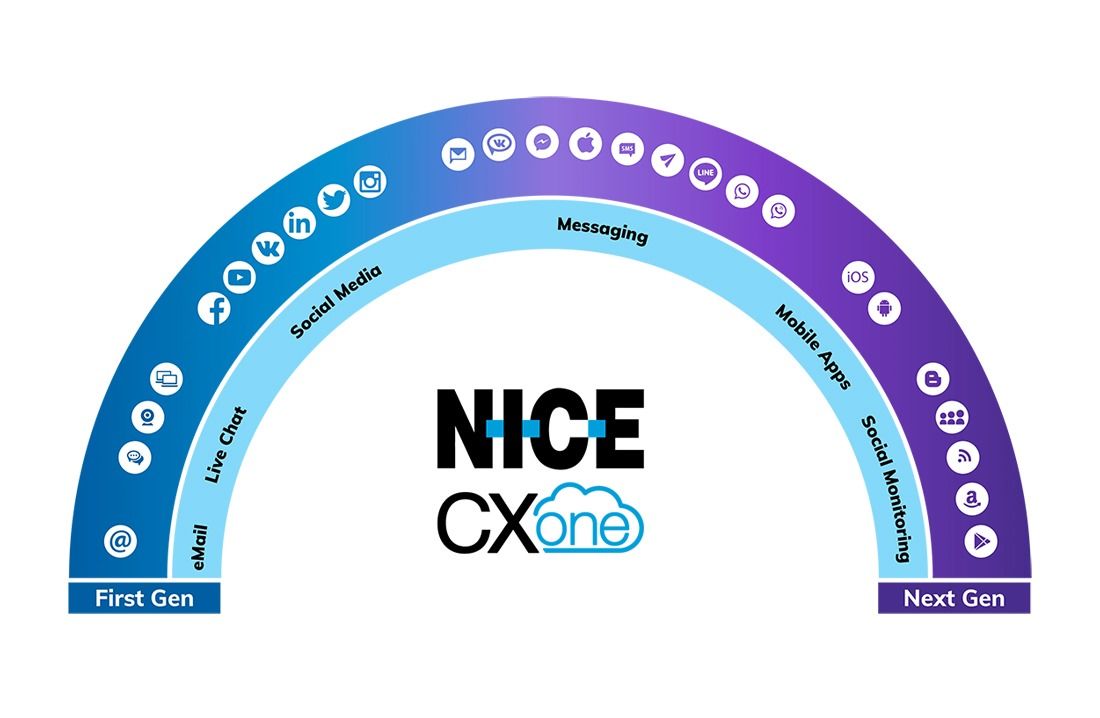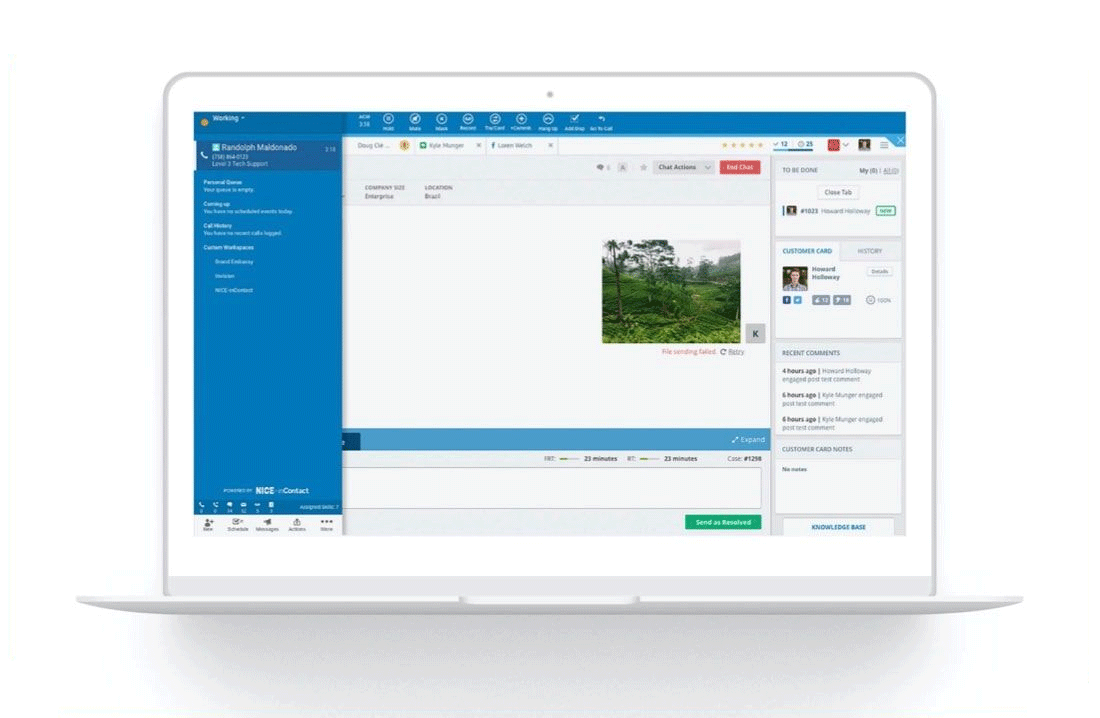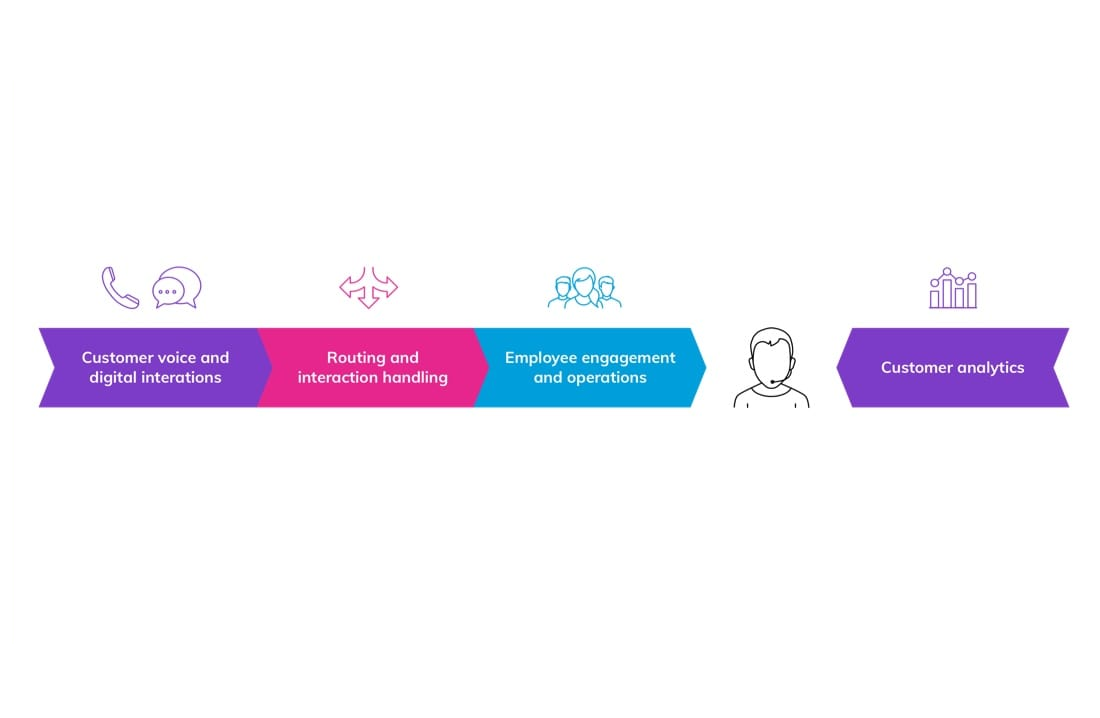What is Customer Experience? Key Components and Why It Matters
Customer experience is a competitive differentiator that creates lifetime customers and a better bottom line. But it's also an elusive target for many businesses.
If your goal is to make customer experience a more prominent component of your brand's strategy, the information on this page will give you plenty of food for thought. Continue reading to learn about the intricacies of customer experience, including its definition, relevance in today's competitive market, and strategies to enhance it effectively.
What is customer experience?
Customer experience, or CX, is the opinion a person has of a business based on a collective set of impressions. These impressions can come from numerous sources, including social media posts, product experiences, and even billboards.
Digital technology has exponentially increased the number of impressions a brand can make on consumers. While in the past, businesses may have only had to focus on having attractive stores or catalogs, good products, and effective phone customer service, today's brands have to manage social media presence, online shopping experiences, viral product reviews, and an abundance of digital marketing and communication methods.
While the opportunity to create more impressions is a marketer's dream, it also adds great complexity to managing the customer experience and creates more opportunity for things to go wrong. A customer may have a very positive perception of a brand based on the impressions made by high-quality products, smooth website experiences, and clever TV ads, but a political Tweet or frustrating chatbot interaction can lower the customer's opinion of the business a notch or two. Or ten.
Past brand loyalty doesn't guarantee future loyalty, especially when a business doesn't have a good handle on the quality of the customer experiences it’s providing. When customers interact with a business, they expect:
- Consistent experiences at every touchpoint
- Fast and convenient transactions and interactions
- Knowledgeable and friendly service
- To be recognized and understood
Brands that can't deliver on these customer expectations risk the bottom line due to customer churn.
The importance of customer experience
Customer experience has been a primary focus for businesses for several years. In fact, one recent study found that customer experience is the top business priority for nearly 46% of businesses for the next five years, well ahead of product and pricing.
Consumers still value high quality, innovative products at a good price, but those two factors have become, more or less, table stakes. Consistent, personalized, low effort customer experience is the thing that can make a good brand great and create lifetime customers.
Just how important is CX to customer loyalty? Gartner found that customer experience drives over two-thirds of a customer's loyalty to a brand.
Loyal customers don't just stay around longer and buy more products and services, they are also less sensitive to price and more likely to recommend products to friends and family. This "word of mouth" marketing is highly effective and can spur revenue growth. Every brand should try to turn their customers into their most successful marketing team, and providing exceptional customer experience is an effective way to do just that.
Loyal customers who refer products to everyone they know, plus increased customer acquisition driven by a reputation for being customer-centric, can help deliver superior financial results. According to Adobe research, "Companies that prioritized and effectively managed customer experience were three times as likely than their peers to have significantly exceeded their top business goals" in the prior year.
On the flip side, not providing consistent, exceptional CX can degrade business results by negatively impacting customer retention. As an example, our recent customer experience study revealed that in the majority of cases, it only takes two negative customer service interactions for a consumer to switch to a competing brand. Because acquiring new customers is much more expensive than keeping existing ones, higher churn caused by poor or inconsistent customer experience can wreak havoc on income statements.
What does poor customer experience look like?
Examples of poor customer experience go viral all the time, regardless of the size of the scope and the number of people impacted. A recent example that impacted thousands of people happened when Southwest canceled thousands of flights in late December 2022, right when people were trying to get back home after traveling for Christmas. Southwest's reputation, which has long been one of stellar customer service and on-time arrivals, took a hit from the incident.
An example much smaller in scope that also went viral involved an airline passenger whose valuable guitar was damaged while being loaded onto the plane. Frustrated by what he considered an indifferent and lackluster response from the airline, the passenger and his band recorded "United Breaks Guitars," which became an immediate hit on YouTube and iTunes, and a PR nightmare for the airline.
But poor customer experience is often not as dramatic or well-known. It can be something that makes a customer leave quietly for a competitor, like not being able to check out on a website during a big sale, or a dirty restaurant bathroom that takes away the customer's appetite.
Examples of poor customer service experiences are also all too abundant. Frustrating IVR menus, indifferent phone agents, and not-so-smart chatbots can make bad impressions on customers.
It's important to note that just one lackluster interaction can undo all the goodwill created by other touchpoints. A customer may be fiercely loyal to a brand because she loves its products, thinks highly of its loyalty program, and considers its mobile app to be superior. But after an unhelpful email exchange with the customer support team, she may be reconsidering her brand loyalty.
This is the reason businesses need to closely manage customer experience - one bad apple can spoil the whole bunch.
What does a good customer experience look like?
Unfortunately, good customer experiences aren't as inclined to go viral as bad ones, but there are still some examples of positive experience that make the rounds on social media.
Although airlines provide some examples of bad customer experience, they can also go above and beyond to create fiercely loyal customers. As an example, a Southwest Airlines passenger traveled to Costa Rica to be a bridesmaid at her sister's wedding. When she arrived, she realized she had forgotten her bridesmaid's dress. After tweeting a plea to Southwest on Twitter, the airline saved the day by getting her dress to her in time for the wedding.
It's not often that a business can make heroic gestures like the one above. Often, providing positive customer experiences is about paying attention to the details of the end-to-end customer experience journey to ensure the customer journey is smooth and consistent for every customer, every time, regardless of the path they take.
When designing customer experience, organizations need to pay particular attention to the handoffs between touchpoints since those are places in the entire customer journey where friction can occur. As an example, the modern customer service experience often involves multiple channels on a customer's path to resolution.
A customer may start his support customer journey with a self-service attempt that escalates to a chat session, or an email exchange with an agent may transition into a phone call. In these cases, contact centers that provide omnichannel customer service can enable customers to seamlessly travel across touchpoints by making their information available every channel. This creates a frictionless and more positive customer experience.
How do you measure customer experience?
While there isn't a single metric that will tell you how you're doing, a collection of KPIs can help you analyze customer experience and customer interactions. Customer experience metrics should be a combination of operational data, customer feedback, and objective customer behavior measurements, which can include the following.
Customer Satisfaction Score (CSAT)
Measuring customer satisfaction is a traditional way to know how customers feel about specific aspects of your business, such as customer service and product quality. While customer satisfaction surveys measure satisfaction at a specific point in time and can highlight areas for improvement, they don’t measure the full customer journey up to that point and can't be used to predict future customer behavior. Therefore, customer satisfaction scores should be used in conjunction with other metrics.
Net Promoter Score® (NPS)
Net Promoter Scores® measure how likely a customer is to recommend companies and products to friends and family. It has become an important metric when measuring customer experience because it indicates customer loyalty and is a predictor of future business growth.
Customer effort score (CES)
The customer effort score measures how much work a customer has to do when transacting with a business. Because people value low-effort customer experience, CES should be included in a business's collection of CX metrics.
Other ways to measure customer satisfaction
The above customer input is collected through surveys. Additional indirect customer feedback can be collected through AI-powered tools such as interaction analytics, which can analyze all customer service interactions in all channels and provide insights such as contact drivers and customer sentiment.
Operational reports can also provide directional input about the customer experience. For example, e-commerce businesses might want to monitor data such as page loading speed to understand what customers are experiencing with their website.
For contact centers, the following data can be easily obtained from their call center systems and used to gain insights regarding high and low points of the CX they're providing:
- Average speed to answer (ASA)
- First contact resolution rates (FCR)
- Transfer rates
- Average hold times
- Self-service success rates
- And more
When choosing your contact center CX metrics, keep in mind that people value fast, easy, convenient, and accurate resolutions.
Customer behavior can tell you a lot about how customers really feel about the customer experience your business is providing. Therefore, consider including behavioral metrics such as customer turnover and customer lifetime value (CLV) in your set of customer experience KPIs.
Strategies for improving customer experience
Founder and CTO at HubSpot, Dharmesh Shah, once said, "Improve the experience and everybody wins." It's a simple but insightful statement. Businesses that prioritize the continuous improvement of customer experience treat their customers to satisfying interactions that improve financial results. A better bottom line makes shareholders happy and can also improve the employee experience, especially if the business is able to pass along some of their increased profits to them.
But making meaningful CX improvements can be challenging. In fact, CMSWIRE reports that, "[O]ver 70% of CX leaders struggle to design projects that increase customer loyalty and achieve results." Additionally, spiceworks, citing research by Mindstream Interactive, reports that, "58% of organizations surveyed believe their CX will be outdated in just two years’ time." So, not only is it challenging to improve customer experience, it's also like trying to hit a moving target.
Realizing both the importance of customer needs and complexity of improving customer experience, many organizations have implemented formal customer experience management (CEM) programs designed to ensure people have consistent and positive customer experience throughout their customer journeys.
Customer experience management is a data-driven, cross-functional, structured approach to designing, managing, and improving the customer experience. Author and customer service expert Steve Curtin describes customer experience management as, "The art and science of coaxing lifetime loyalty from daily transactions." In other words, customer loyalty is often based on doing everyday tasks right.
Exceptional customer experience doesn't happen organically - it takes detailed planning, customer-centric design, and buy-in across the organization, from executives to frontline staff. In fact, employee behavior is a key to success of a customer experience strategy, as they're often the ones charged with "coaxing lifetime loyalty from daily transactions."
Another cornerstone of successful customer experience management is customer data - the more the better. Customer experience data from sources such as customer surveys, product reviews, social media comments, customer service interactions, and focus groups can unearth a treasure chest of ideas for improving the customer experience.
Steps for an effective customer experience strategy
Good CEM programs require a structured approach to improving CX. A new CEM initiative should include the following steps in order to get up and running and ensure effectiveness on an ongoing basis:
Step 1. Secure executive buy-in and funding
Transforming the customer experience can have a substantial impact on the business. For example, it may require a change to the organizational structure, a change in job duties and responsibilities, and revised processes. A transformation this large needs a strong executive sponsor and ample funding for change initiatives.
Step 2. Assemble cross-functional customer service teams
Multiple groups within a business impact customer experience, from product management to customer service, from website management to product fulfillment. They can each provide a unique perspective on customer experience strengths, weaknesses, and opportunities. And because the CX transformation effort may impact their teams, including employees from across the organization will help ensure buy-in and an understanding of expectations.
Step 3. Identify customer experience goals
It's important to know what your business is hoping to accomplish with its customer experience strategy, and that's where CX goals come in. Are you hoping to better understand what drives customer satisfaction and loyalty? Or maybe improve customer lifetime value? Identifying customer experience goals is an important step in the CEM process because they will guide decisions about CX initiatives and designs.
Step 4. Design your customer experience management process
Because improving the customer experience is an ongoing effort, organizations need to define the process they'll use to ensure consistent focus on CX. NICE Satmetrix, the co-creator of NPS and leader in customer experience management, suggests using a CEM process with the following steps
- Gather data
- Analyze data
- Close the loop
- Act on data
- Drive change
Step 5. Select and implement technology
For a substantial customer experience transformation, it's a good idea to invest in software specifically designed for CEM. The best customer experience management software includes data analysis tools and collaboration functionality. Because CEM is a data-driven, cross-functional effort, these two capabilities are essential for success.
Related resource: Guide to Designing and Implementing a Customer Experience Management (CEM) Program
How to improve customer experience with NICE
You may find CEM software isn't the only technology you need to implement to optimize the customer experience. For example, during analysis you might find customers have to wait too long for phone support, don't like the IVR, and that they really want some good self-service options.
If you're using outdated legacy contact center systems, solving these issues may not be possible. Meeting your business's customer experience goals may require an updated cloud customer support platform.
The best contact center CX platforms are built to provide more seamless, satisfying customer service interactions, which directly impact the brand's overall customer experience. Being stuck in an IVR or not being able to solve your own problems is frustrating to customers and leaves a bad impression on them.
NICE CXone is built to optimize the customer experience while also streamlining contact center operations and costs. CXone's capabilities include:
Digital self-service
Most resolution journeys begin with a self-service attempt. A majority of customers will Google an issue or search a company's website before contacting customer service. These consumers value effective self-service for its speed and convenience, and meeting their expectations is part of optimizing the customer experience.
NICE provides several effective self-service options, including the following:
- Conversational AI and chatbots. Conversational AI enables customers to interact with automated support systems using natural language. When used with solutions such as chatbots, it can eliminate menus and create a more natural experience.
- Interactive voice response (IVR). Conversational AI is also available in CXone's IVR solution, which eliminates the frustrating experience of being stuck in an endless menu of options.
- Knowledge management. A smart, easily searchable knowledge base is a great way to empower customers to get quick answers to common questions. Bonus: Our knowledge management solution can be indexed by search engines, so your content is high on search engine results pages when someone Googles something about your brand.
CX analytics
Because understanding and improving the customer experience are highly data-driven undertakings, organizations need advanced analysis tools capable of capturing and interpreting large amounts of information. Our solutions include the following (and more):
- Interaction analytics. Our interaction analytics solution can analyze 100% of customer service interactions in near real-time. The powerful insights it produces include:
- Contact drivers
- Trending topics
- Compliance issues
- Targeted training needs
- Customer sentiment
Not only does this AI-powered tool provide insights about how customers are feeling about CX, but it also highlights opportunities to optimize the customer experience.
- Feedback management. Feedback management is our customer survey tool that's available in each customer's channel of choice. It's highly configurable, allows users to slice and dice data in a multitude of ways, and is an essential tool for helping brands execute their customer experience strategies.
- Reporting and BI. Our reporting solution comes with an abundance of out-of-the-box reports and empowers end users to easily create their own custom reports.
Journey orchestration
Because consumers expect to be able to move seamlessly across support channels, we built our customer journey orchestration tools to deliver omnichannel experiences. These solutions include:
- Voice and digital channels. Today's consumers want to be able to interact with businesses on their own terms. This includes choosing their preferred communication channels. With voice and over 30 supported digital channels, CXone makes meeting these customer expectations possible.
- Automatic contact distributor (ACD). Improving the customer experience through omnichannel support requires a superior routing engine. CXone ACD can make sure voice and digital interactions get to the right agent the first time, avoiding frustrating transfers.
- Unified agent desktop. Multi-skilled agents are a key factor in being able to efficiently provide omnichannel customer service. MAX, our unified agent desktop, puts all the systems agents use in a single user interface. Additionally, it includes a consolidated inbox so that agents can effectively manage interactions from multiple channels.
NICE CXone also includes award-winning workforce engagement, customer relationship management solutions and automation tools to further enhance the customer experience.
To learn more about how NICE CXone can help your organization meet its CX goals, visit our main product page and then watch a demo to see CXone in action.









